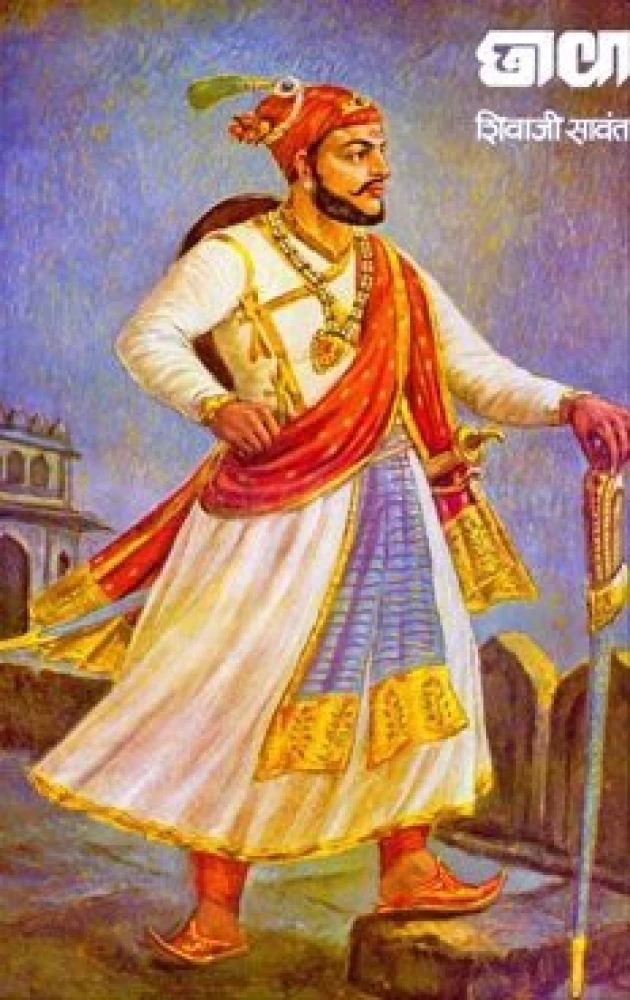
Availability
available
Original Title
Chhava
Subject & College
Series
Publish Date
1980-02-01
Published Year
1980
Publisher, Place
Total Pages
920
ISBN
8182032754
Format
Paperback
Country
INDIA
Language
MARATHI
Average Ratings
Readers Feedback
Sambhaji escaped prison and formally ascended the throne on 20 July 1680. A brilliant tactician, Sambhaji was worthy of the throne of the Marathas, although his rule was short lived. This book reveals his life story and showcases him for the ruler that he was.
Chhava is a renowned Marathi historical novel authored by Shivaji Sawant, best known for his previous work Mrityunjay. Published in 1980, Chhava delves into the...Read More
Nutan Ganesh Pawar
Sambhaji escaped prison and formally ascended the throne on 20 July 1680. A brilliant tactician, Sambhaji was worthy of the throne of the Marathas, although his rule was short lived. This book reveals his life story and showcases him for the ruler that he was.
Chhava is a renowned Marathi historical novel authored by Shivaji Sawant, best known for his previous work Mrityunjay. Published in 1980, Chhava delves into the life and legacy of Chhatrapati Sambhaji Maharaj, the eldest son of the legendary Maratha warrior king Chhatrapati Shivaji Maharaj. This masterpiece combines historical research with vivid storytelling to present a balanced, dramatic, and empathetic portrayal of Sambhaji’s complex personality and tumultuous life. The novel has earned acclaim for it’s rich historical narrative, nuanced character development, and captivating prose.
The novel begins with Sambhaji’s childhood, a phase marred by separation from his family and imprisonment under Mughal custody. Sawant explores how this early trauma shaped his resolute and fierce personality. As the narrative unfolds, readers witness Sambhaji’s upbringing in the Maratha court, his complicated relationship with his father, his marriage to Yesubai, and the pressures of royal duties that fall on his young shoulders.
One of the central themes of the book is the relationship between Sambhaji and his father, Shivaji. While Shivaji saw a successor with promises in Sambhaji, their relationship was often strain due to misunderstandings and political conspiracies. The conflict adds depth to the narrative highlights the emotional struggles that Sambhaji endured alongside his military campaigns.
After Shivaji’s death, Sambhaji’s accession to the throne was fraught with controversy. He faced betrayal from his stepmother Soyrabai and other courtiers, who sought to place his younger half-brother, Rajaram, on the throne. Sambhaji’s victory in the succession struggle marks a pivotal point in the novel. The narrative then shifts to his relentless defense of the Maratha Empire against the Mughal onslaught led by Aurangzeb. The latter half of Chhava details his military strategies, the sacrifices he made, and the ultimate tragedy of his brutal execution at the hands of the Mughals.
CHARACTERIZATION =
Sambhaji is portrayed as a multidimensional character. Sawant crafts him not only as a fierce warrior and a brilliant strategies but also as a poet, a statesman, and a man driven by intense passion and loyalty. His flaws stubbornness, impulsiveness and moments of harsh judgment are depicted with honesty making him a deeply relatable and human figure
Yesubai, Sambhaji’s wife, stands out as a symbol of unwavering support and inner strength. Her relationship with Sambhaji is portrayed with tenderness and tragedy, adding emotional weight to the narrative. Other notable characters include Aurangzeb, whose relentless ambition and religious zealotry stand in stark contrast to Sambhaji’s more tolerant and pluralistic vision.
The depiction of supporting figures including courtiers, generals and family members provides a board view of the socio-political landscape of the time. Each character is thoughtfully developed contributing to the richness of the narrative and the historical authentically of the novel.
THEMES AND SYMBOLISM =
Several key themes permeate Chhava. The most prominent is the struggle for freedom and self-determination. Sambhaji’s life was dedicated to preserving the sovereignty of the Maratha Empire against overwhelming odds. His unyielding resistance against Aurangzeb’s imperial ambitions symbolizes the larger fight against tyranny and oppression.
Another significant theme is the burden of leadership. Sambhaji’s journey illustrates the immense pressures and sacrifices that come with kingship. His personal losses, isolation and ultimate martyrdom serve as a poignant reminder of the cost of power and the price of loyalty to one’s ideals.
The novel also explores themes of betrayal and trust. Sambhaji’s life was marred by betrayals from within his own family and court which adds a layer of tragedy to his story. The recurring motif of loyalty versus treachery underscores the complexities of human relationships and political alliances.
WRITING STYLE =
Shivaji Sawant’s prose is evocative and richly descriptive. His command over the Marathi language allows him to paint vivid scenes of battle, royal court intrigues and intimate personal moments. The dialogues are sharp and reflective of the characters’ distinct personalities. The pacing of the novel balances action and introspection, keeping readers engaged throughout.
Sawant’s use of historical detail is meticulous, yet it never feels overwhelming. His ability to blend factual accuracy with imaginative storytelling is one of the novel’s greatest strengths. The narrative moves seamlessly between moments of grandeur and quiet introspection, capturing the full spectrum of human experience.
IMPACT AND LEGACY =
Chhava has left an indelible mark on Marathi literature and historical fiction. It brought widespread recognition to Sambhaji Maharaj’s life and legacy, challenging earlier narratives that painted him in a negative light. The novel has inspired a renewed interest in Maratha history and has been instrumental in reshaping public perception of Sambhaji as a valiant and visionary leader.
The book’s popularity transcends linguistic boundaries, with translations making it accessible to a broader audience. Its universal themes of sacrifice, loyalty and the quest for justice resonate deeply with readers from diverse backgrounds.
